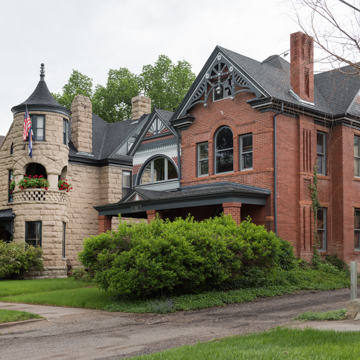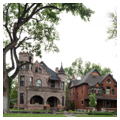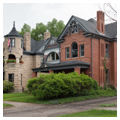This row of seven Victorian residences adorns the avenue named for Colorado governor Frederick W. Pitkin, who retired to Pueblo in 1883. Pitkin helped develop this subdivision for wealthy Puebloans, including many associated with the steel industry. Subtly repeated design elements—pink stone, decorative shingling, brick, and roof textures, as well as similar setbacks and massing—give harmony to the block. The houses are also similar in their stone archways, arch-topped windows, Doric columns, and chimney style and placement. The exception is the sixth home, a 1911 bungalow, one of the earliest in the region. Because of its scale, height, and columned veranda it fits pleasingly into the block.
You are here
Pitkin Place Historic Residential District
If SAH Archipedia has been useful to you, please consider supporting it.
SAH Archipedia tells the story of the United States through its buildings, landscapes, and cities. This freely available resource empowers the public with authoritative knowledge that deepens their understanding and appreciation of the built environment. But the Society of Architectural Historians, which created SAH Archipedia with University of Virginia Press, needs your support to maintain the high-caliber research, writing, photography, cartography, editing, design, and programming that make SAH Archipedia a trusted online resource available to all who value the history of place, heritage tourism, and learning.




